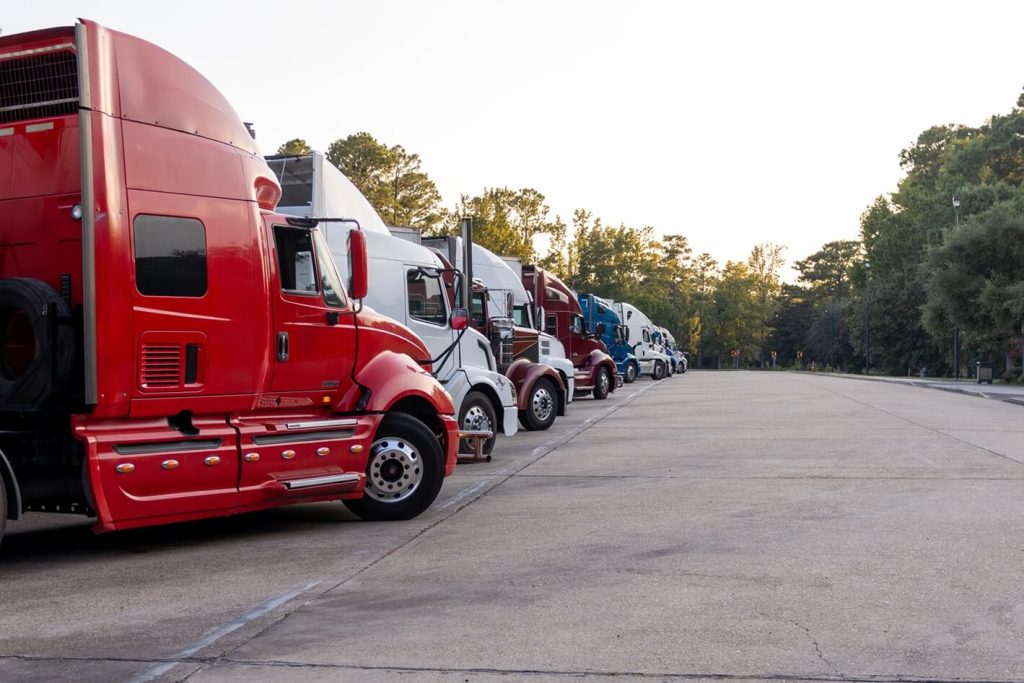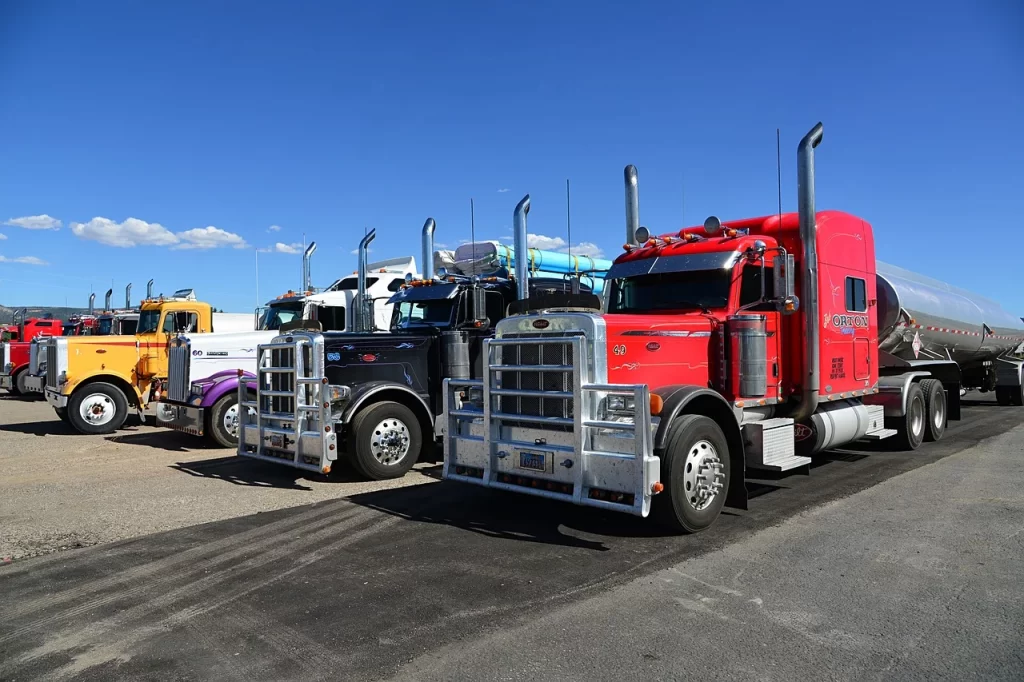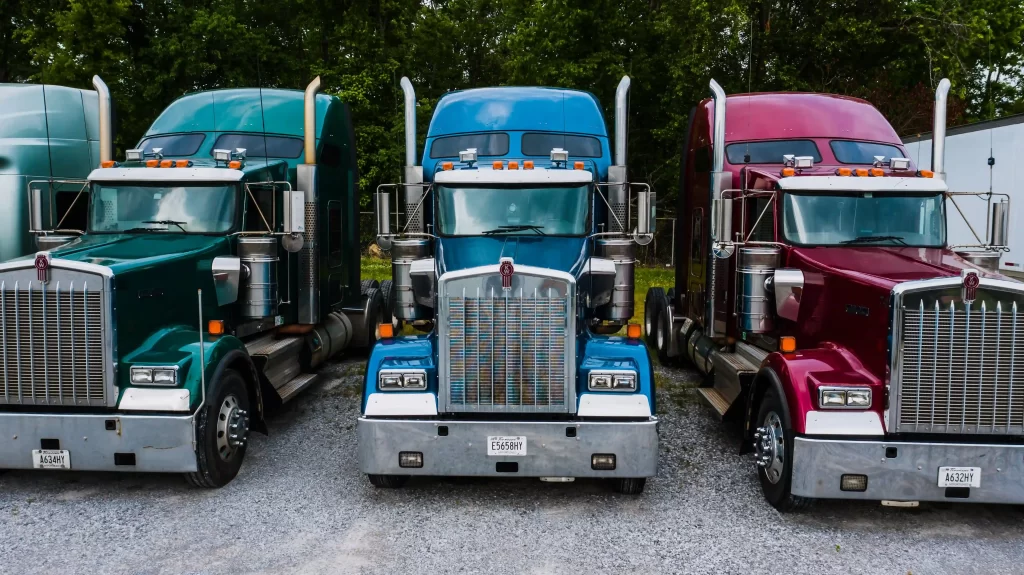
The trucking industry depends on a network of parking areas to keep drivers safe and deliveries on schedule. So, the question is, how many parking spaces per acre? By maximizing parking space utilization, the total logistics process can be improved.
Factors Affecting Parking Space Utilization
Layout And Design
The layout and design of a truck parking area greatly determine the number of trucks that can fit on a given acreage. Different types of parking layouts, such as angle, perpendicular, and parallel parking, have varying benefits and factors to consider when designing for efficiency in space use.
Angle Parking
Angle parking is a common choice for truck parks due to its balance between compactness and maneuverability. Trucks are parked at an angle with respect to the driving aisle so as to provide greater visibility when entering or leaving the lot. Parking lot planners achieve great numbers on limited spaces while keeping drivers safe by using this kind of approach.
Perpendicular Parking
Parking trucks at right angles to the drive-throughs is referred to as perpendicular parking. This design allows for more truck parking, but drivers may need more expertise and precision when they want to park or even go out. This system can further hinder truck maneuvering, especially in limited spaces.
Parallel Parking
Linear or elongated truck parking areas usually employ parallel parking. This permits a higher concentration of trucks parked in a straight line, thereby making the best use of space. Nevertheless, compared to angle or perpendicular layouts, parallel parking has a balanced trade-off between maximizing space and maneuverability but can be less efficient in accommodating the largest number of trucks.
Type and Size of Trucks
What sort and size of tracks determine how many cars can fit within a truck car park? Different types, such as semi-trailers, box trucks, or flatbeds, have various sizes and spatial requirements that affect the total capacity within a compound.
Semi-trailers are the largest trucks in truck parking. Since they are long and tall, you need to ensure there are enough parking spaces per acre to accommodate both the cab and trailer units.
The design of a parking facility intended to hold semi-trailers must include provisions for the turning radius, maneuvering space, and overall dimensions of these types of vehicles so that the maximum number of parking spaces can be achieved.
Box Trucks
Compared with semi-trailers, box trucks are smaller but still require adequate parking space and room for maneuvering. Thus, during the planning stage of a truck parking layout, one also has to take into account the size of the truck, in terms of length or height, so that the available land resource is used well.
Flatbed Trucks
Parking flatbeds differ from other types because they have an open motor home freight carrier. Parking lots meant for flatbeds must have accommodations at the rear end that cater to this feature while allowing drivers safe access to their parked cars.
To ensure that there is sufficient parking space available within a truck lot, one needs to optimize flatbed trailer lengths along with widths and clearance requirements.
Determining How Many Trucks Can Fit on a Square Acre
Calculation of Available Parking Space: The size and shape of an acre can greatly affect the number of trucks it can hold, yet estimates usually range from 34 to 40 trailers per acre without considering the truck’s cab.
- A bare-bones lot with minimal amenities and tight spacing might fit up to 40 trucks per acre.
- A more spacious layout with lots of amenities might only accommodate 15-20 trucks per acre.
When planning a truck parking area, it’s best to balance maximum capacity with driver safety, comfort, and regulatory compliance. While fitting more trucks per acre can seem advantageous, it’s often better to aim for a number in the middle of the range to ensure a functional, safe, and driver-friendly parking facility.
Factors Influencing the Number of Trucks Parked
- Parking Lot Configuration
- Size of Vehicles
- Mixed Vehicle Size
- Space Used for Additional Amenities
- Local Regulations
To Summarize
Efficient parking space utilization, whether in Iowa or Minnesota, is essential for the trucking industry to streamline operations and ensure the well-being of drivers. By understanding the factors influencing truck parking capacity and implementing best practices, you can maximize the number of trucks parked per acre.
Become a property member and help increase the number of efficient parking lots across North America.
If you are a driver, you can sign up as a Truck Member and take advantage of truck parking throughout the USA.
The information published herein is for general informational purposes only. Truck Parking Club does not make any representations or warranties about the completeness, reliability, legality, and accuracy of this information. Any reliance placed on such material is strictly at the user’s own risk. Truck Parking Club shall not be responsible for any losses or damages incurred in connection with the information published herein.





